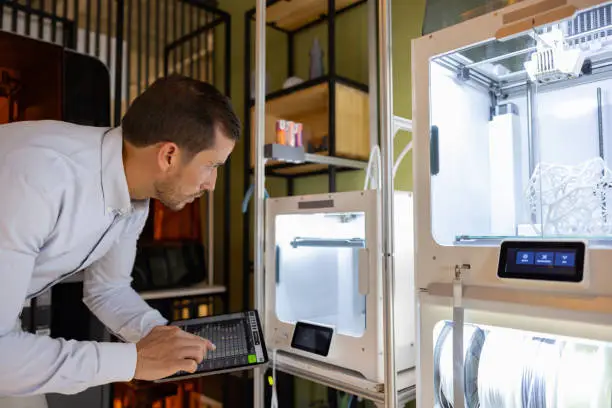The world of 3D printing is ever-evolving, with new materials and techniques continually expanding the horizons of what can be achieved. One such material that has gained popularity in recent years is Polyethylene Terephthalate Glycol, commonly known as PETG. This blog post aims to shed light on PETG uses in 3D printing, and why it might just be the perfect material for your next printing project.
What is PETG ( PETG Meaning)
PETG stands for Polyethylene Terephthalate Glycol and is a thermoplastic polymer resin that belongs to the polyester family. It is an adaptation of PET, with glycol added at the molecular level to improve its properties. The result is a material that offers excellent transparency, dimensional stability, and chemical resistance. These PETG properties make it an attractive option for 3D printing applications.
What is PETG plastic (PETG definition)
PETG plastic is a reliable and versatile material that offers a unique combination of strength, flexibility, and aesthetic appeal, making it a popular choice for many 3D printing enthusiasts.
Why Use PETG in 3D Printing?
The benefits of using PETG in 3D printing are numerous. Firstly, PETG prints are durable and have excellent layer adhesion, reducing the risk of prints breaking or warping. Secondly, PETG is resistant to water and many chemicals, making it suitable for items that will be exposed to harsh environments or need to be sterilized. Lastly, PETG combines the ease of use of PLA (Polylactic Acid) with the strength and durability of ABS (Acrylonitrile Butadiene Styrene), offering the best of both worlds.
What is PETG made of?
Overall, Polyethylene Terephthalate Glycol PETG structure is essentially a modification of PET (Polyethylene Terephthalate), with the addition of glycol during the polymerization process. This glycol modification prevents crystallization, making the material amorphous. As a result, PETG exhibits enhanced toughness, clarity, and flexibility. It also provides improved dimensional stability, which means it maintains its shape better under stress and heat. This unique structure makes PETG a versatile material, especially popular in applications like 3D printing where its properties are highly valued.
How to Print with PETG
Printing with PETG name, while not overly complicated, does require some specific adjustments to your 3D printer’s settings to achieve optimal results. Here’s a detailed guide on how to fine-tune your printer for PETG:
Temperature Settings
The first step in printing with PETG is setting the correct temperatures. The hot end temperature, responsible for melting the filament, should be around 230-250°C. This range ensures the material melts correctly without causing damage to the printer or the material itself.
The bed temperature also plays a crucial role. A temperature of 80-90°C is recommended, as it helps the first layer of the print adhere properly to the build platform, reducing warping and improving overall print quality.
Print Speed
PETG polymer doesn’t respond well to high-speed printing. Aim for a slower print speed, typically around 30-50mm/s. This slower pace allows the filament more time to bond with the previous layer, resulting in better layer adhesion and ultimately, a stronger print.
Cooling Settings
The cooling fan settings are another critical aspect to consider when printing with PETG. Unlike materials like PLA that benefit from full cooling, PETG requires a more balanced approach. Too much cooling can lead to poor layer adhesion, causing the print to break or split along layer lines. On the other hand, too little cooling can result in stringing and blobbing, where excess melted filament forms unwanted strands or blobs on your print.
To prevent these issues, start with a lower fan speed for the first few layers (around 20-30%), then gradually increase to about 50% for the rest of the print. This strategy allows the initial layers to bond firmly to the build plate, while the rest of the print benefits from sufficient cooling to solidify properly without stringing or blobbing.
The key to success with PETG (and 3D printing in general) is patience and a willingness to experiment. Make small tweaks, observe the results, and don’t be afraid to fail. With time and practice, you’ll discover the perfect settings that yield fantastic prints every time.
Polyethylene Terephthalate Glycol Modified
Polyethylene Terephthalate Glycol Modified, commonly known as PETG, is a variant of the widely used thermoplastic polyester PET (Polyethylene Terephthalate). This modification involves the addition of glycol during the polymerization process, which prevents crystallization and makes the material amorphous. As a result, PETG displays enhanced characteristics such as increased durability, chemical resistance, and improved clarity. It also offers excellent dimensional stability and heat resistance. These PETG specs make it a popular choice in various industries, including 3D printing, medical devices, and food packaging.
Applications of PETG in 3D Printing
PETG’s robustness and versatility make it suitable for a wide range of applications. It’s commonly used for printing mechanical parts, protective components, and outdoor items due to its resistance to UV light. Moreover, PETG’s transparency makes it an excellent choice for printing light diffusers, lampshades, or any other item where light needs to pass through.
Potential Challenges and Solutions
While PETG is a fantastic material, it’s not without its challenges. Some common issues include stringing, poor bed adhesion, and difficulty in achieving a smooth finish. However, most of these problems can be solved with proper calibration and fine-tuning of your printer settings. For instance, using a heated bed and applying a bed adhesion solution can help with bed adhesion problems.
What is PETG material? PETG offers a unique blend of properties that make it a versatile and valuable material in the world of 3D printing. Whether you’re a hobbyist looking to experiment with new materials or a professional seeking a durable and reliable option for your prints, PETG might just be the material you’ve been looking for.



